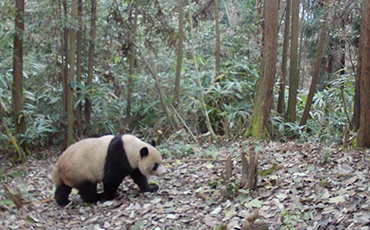Sanxingdui discoveries shed light on ancient China

A golden mask unearthed in the No 5 sacrificial pit at the ruins. (Photo by Wang Mingping/For China Daily)
Chinese archaeologists announced the discovery of over 500 cultural relics on Saturday, during an ongoing excavation at the Sanxingdui Ruins site in Guanghan, Sichuan province.
The relics were uncovered in six sacrificial pits which date back over 3,200 years.
Among the important cultural finds are gold and bronze masks, bronze ware, more than 100 ivory tusks, textiles and jade among other artifacts.
"Thanks to the new discoveries, we've basically figured out the layout of the sacrificial zone of the Sanxingdui site," said Lei Yu, a researcher at the Sichuan Provincial Cultural Relics and Archaeology Research Institute who heads the ongoing excavation.
The about 12-square-kilometer site was discovered in 1929, and major breakthroughs were made in 1986 with the discovery of two pits believed to be for sacrificial ceremonies. The pits were accidentally uncovered by local farmers digging up earth to make bricks.
Over 1,000 artifacts were found at that time, including elaborately decorated bronze ware, face masks and "divine trees"-bronze sculptures of trees with stretching branches.
Explaining to China Daily why the new round of excavations has come after a hiatus of decades, Lei said the previous excavations of pits No 1 and No 2 were made to rescue artifacts after the accidental discovery.
"Once the two pits had been cleaned, the urgency for further excavation did not exist," he said. "Archaeology cannot be hasty. We have to wait for the need for a well-planned academic purpose to take the initiative for more excavations."
Following an academic project aimed at more deeply understanding the ancient civilization in Sichuan province known as Shu, whose historical records are lacking, investigations in the area around the No 1 and No 2 pits were restarted in October 2019.
The No 3 pit was then found in December 2019. Follow-up field research began in March 2020, and five more pits were uncovered. In October, ongoing and detailed excavations were started on all six pits.
The biggest among the six pits, the No 8 pit, is 19 square meters. The smallest, No 5, which covers 3.5 sq m, is where the most recent gold mask was found.
Lei pointed out there were many similarities among the more recently discovered pits and the two found in 1986, in terms of the types of artifacts unearthed. Divine trees and bronze masks were found once again.
The recent discoveries further confirm the theory that the pits were used for sacrificial purposes as many of the items found had been smashed and burned before being buried. Lei said that deeper study is needed to rule out any other speculation as to the pits usage.

Archaeologists study the No 3 sacrificial pit at the Sanxingdui Ruins in Guanghan, Sichuan province, on Friday. (Photo/Xinhua)
Nevertheless, some new types of artifacts have been unearthed.
For example, in No 3 pit, a rich reservoir for bronze ware, archaeologists found two square zun jars, a typical ancient Chinese bronze ritual vessel, according to Lei. Such artifacts were not found in 1986. Some of the bronze ware items have been decorated with dragon and ox patterns.
In the No 6 pit, a 1.5-meter-long and 40-centimeter-wide wooden box covered in cinnabar has brought a new mystery. A plan to open it is still being drafted.
Other important items include decorative gold items in the shape of birds, ivory and bone carvings, silk and cong-a jade artifact originating from the 5,000-year-old World Heritage Site Liangzhu Archaeological Ruins in Zhejiang province, more than 1,800 kilometers away.
"These artifacts show the Sanxingdui site had a close connection with Central China, but it also marks an original ancient civilization (in Sichuan) with strong creativity," said Chen Xiandan, a member of the project who also took part in the 1986 excavation.
For interdisciplinary research at Sanxingdui, 34 research universities and research institutes are cooperating on the ongoing project. To better conserve the unearthed relics and analyze the findings in time, separate excavation structures cover each of the pits, and laboratories with high-tech equipment are on-site. No such approach has been used previously for archaeological excavation in China.
"Conservation of the relics is processed simultaneously with the archaeology," Lei said. "The focus is not only put on the artifacts. We don't want to miss any information hidden in the soil."
Song Xinchao, deputy director of the National Cultural Heritage Administration, said the ongoing scientific research at Sanxingdui sets an example for Chinese archaeology in the new era.
"It's an open platform to combine nationwide efforts for academic issues," Song said. "We'd like overseas teams to join the research as well."
Lei expects the findings at Sanxingdui will help to create a system for studying the Shu civilization, combining research at nearby sites in Sichuan.
The Sanxingdui study is listed as a part of a long-lasting program called Archaeology China, that was launched by the National Cultural Heritage Administration focusing on early-stage Chinese civilization.
"Being put in a bigger picture, Sanxingdui will contribute to our exploration of how Chinese civilization was formed mixing different cultures together," Song said.
"Sanxingdui and sites in Central China reflect some shared cultural values, breaking down the barriers brought by long geographic distance," said Zhang Changping, an archaeology professor at Wuhan University. "Such cultural identity created a foundation for a united country of China in a later time."
The latest discoveries at Sanxingdui have generated great public interest. From Saturday to Tuesday, a two-hour livestream broadcast on the archaeological site is being organized for each day. On social media platform Sina Weibo, three out of the top 10 most searched topics on Saturday were about the Sanxingdui Ruins.







